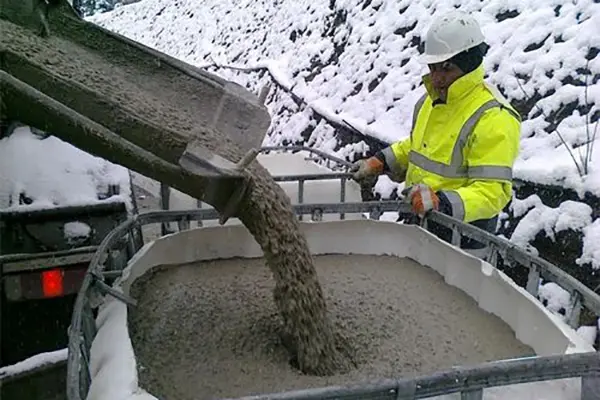Ensuring Concrete Strength in Cold Weather: Understanding Winter Concrete Additives
In the realm of construction, concrete remains a ubiquitous material, employed in various structures and applications. However, cold weather conditions pose a significant challenge to concrete curing and strength development. To address these challenges, winter concrete additives have emerged as indispensable tools for ensuring concrete quality and performance in low-temperature environments.

Understanding the Challenges of Concrete Curing in Cold Weather
As temperatures drop below 40°F (4°C), the rate of concrete hydration slows down, affecting the setting time and ultimate strength of the concrete. This can lead to structural issues and potential failures if not properly addressed.
The Role of Winter Concrete Additives
Winter concrete additives, also known as cold weather concrete admixtures, are chemical compounds that specifically counteract the adverse effects of low temperatures on concrete curing. These additives perform various functions:
-
Accelerate Hydration: Winter concrete additives contain accelerators that promote hydration reactions, enabling concrete to set and gain strength at a faster rate, even in cold temperatures.
-
Reduce Setting Time: By accelerating hydration, winter concrete additives shorten the setting time of concrete, allowing for earlier form removal and faster construction progress.
-
Control Air Entrainment: Some winter concrete additives contain air-entraining agents that introduce microscopic air bubbles into the concrete matrix. These air bubbles help prevent damage from freezing and thawing cycles.
-
Protect Against Freeze-Thaw Damage: Winter concrete additives can also contain antifreeze compounds that lower the freezing point of the concrete mix, preventing it from freezing and causing damage.
Types of Winter Concrete Additives
Common winter concrete additives include:
-
Calcium Chloride: A widely used accelerator that promotes hydration and reduces setting time.
-
Potassium Carbonate: An accelerator and air-entraining agent that improves workability and protects against freeze-thaw damage.
-
Nitrites: Accelerators that effectively reduce setting time in very cold conditions.
-
Alkali Hydroxides: Accelerators that promote hydration and improve workability.
Selection and Application of Winter Concrete Additives
The choice of winter concrete additives depends on various factors, including:
-
Ambient Temperature: Different additives are formulated for specific temperature ranges.
-
Concrete Mix Design: The specific concrete mix design, including cement type and water-to-cement ratio, influences additive selection.
-
Project Requirements: The desired setting time and strength requirements of the concrete influence the choice of additives.
-
Availability and Cost: Different additives may have varying availability and cost considerations.
Winter concrete additives should be carefully selected and properly applied according to manufacturer guidelines. Overdosing can lead to adverse effects, such as excessive air entrainment or rapid setting, compromising concrete quality.
Conclusion
Winter concrete additives play a crucial role in ensuring the performance and quality of concrete in cold weather conditions. By understanding their functions, selection, and application, construction professionals can effectively mitigate the challenges of low-temperature concrete curing and achieve successful projects throughout the year.
Post time: 11 月-29-2023




